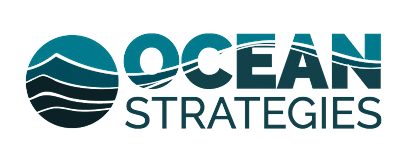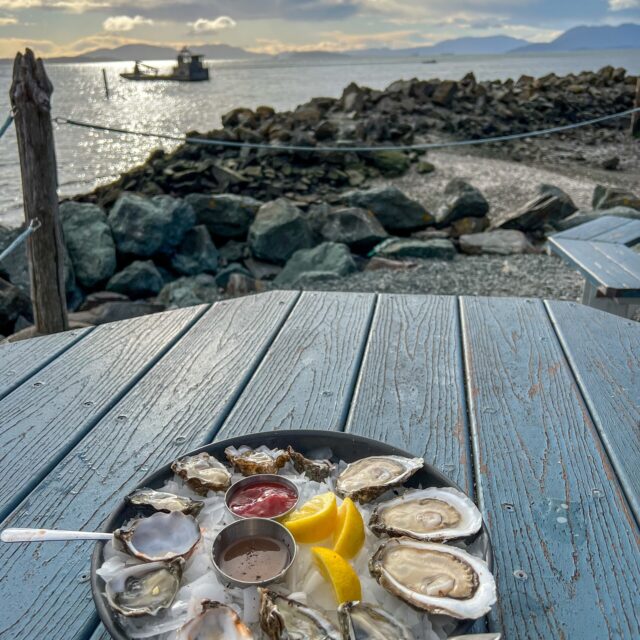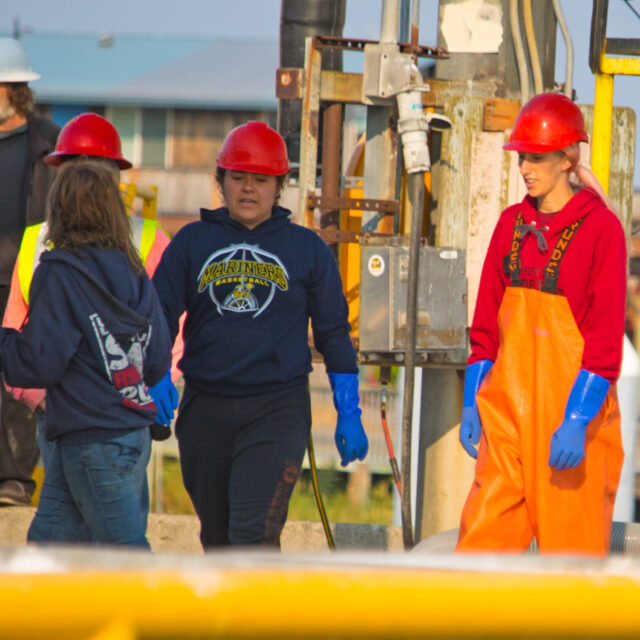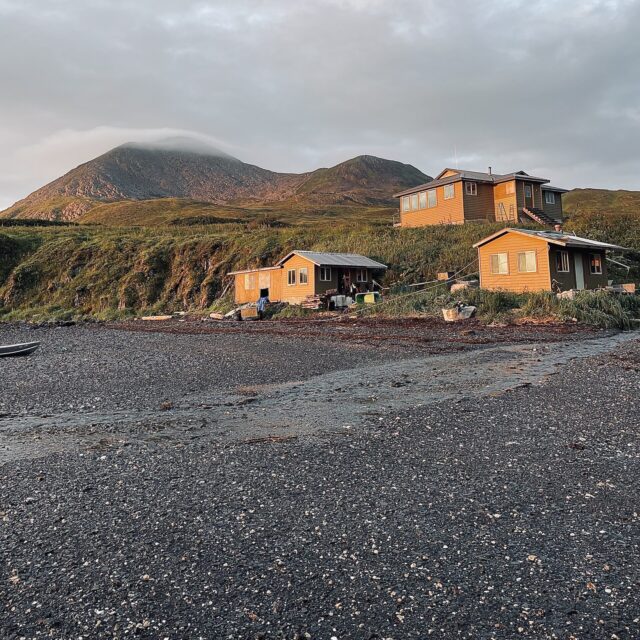Q & A with Clayward (Clay Tam)
Ocean Strategies Principal Brett Veerhusen sat down with Clayward Tam, Director of Cooperative Fisheries Research for the Pacific Islands Fisheries Group, to discuss what fisheries issues are rising to the top in the West Pacific, how they bring together different islands and voices in the management process, and what can be done to make fisheries management more adaptive, inclusive, and equitable.
Watch the full interview with Clay Tam and Brett Veerhusen on YouTube.
—-
Clayward (Clay) Tam is a lifelong fisherman based in Kailua, Hawaii, whose passion and career has centered on sustaining Hawaii’s fisheries for future generations. Clay is the Director of Cooperative Fisheries Research for the Pacific Islands Fisheries Group, a non-profit organization that supports cooperative fisheries research and community education and outreach in the U.S. Pacific Island Region.
He is a current member and chair of the Western Pacific Fisheries Management Council Advisory Panel and holds seats on advisory groups to the Western and Central Pacific Fisheries Commission and the Inter-American Tropical Tuna Commission. He is also a recently appointed member of NOAA’s Marine Fisheries Advisory Committee (MAFAC).
Clay has been recognized by NOAA Fisheries and received the Sustainable Fisheries Leadership Award for Science, Research, and Technology while managing the highly successful Hawaii Division of Aquatic Resources volunteer Ulua Tagging Program.
—-
Brett: Thanks so much for joining me today, Clay. Can you tell us a little about yourself and how you’ve become involved in fisheries management and policy?
Clay: I was born and raised in Hawaii so it has always felt natural to be around the water. My dad was never a fisherman, so my uncle actually taught me to fish. I call fishing my “overgrown hobby.” I was hooked, literally, from when I was a kid. In school I studied aquaculture and agriculture, but fisheries have always been a personal interest of mine. For 17 years I worked with the Hawaii Division of Aquatic Resources, and this exposed me to federally managed fisheries and the data collection that occurs between state and federal levels. Then I got involved in the Council process. It’s an intermediary in a way, with the combination of agencies involved.
After I left the state, I got involved in the nonprofit organization, Pacific Islands Fisheries Group. This was set up out of necessity. There needed to be a conduit to the community to inform fishing communities about the Council process. I’ve been with the organization since 2004, and it’s really grown. We manage grants and research, do outreach, and conduct surveys on both water and land.
I’m fortunate to have lived in an area where I’ve seen the transition to modern development and its effect on our fisheries. My neighbor’s grandfather taught me a lot about the empirical knowledge of fisheries, and how management started. The local knowledge of the fishery helped ground me so I could look forward.
Brett: We’re going to attempt to tackle a few “simple” topics — fisheries management, equity, and climate change. But as with every Ocean Strategies interview we like to begin with the tough and important questions first – what is your favorite seafood to eat, and how do you prepare it?
Clay: You really started with a tough question. On the Hawaiian islands we consume a lot of raw fish. We have a lot that comes over from Japan. Generally being able to taste the food in its original form, the texture and flavor, is a great experience.
Our bottomfish fisheries, which is what we’re studying, I feel like those are some of the best tasting fish. My favorite way to prepare this fish is by steaming it. My background is Chinese and that cooking style is very simple. Fish is steamed or poached, you then add some green onion, ginger, parsley, and then pour hot oil over it and serve it with a bowl of rice – that’s it.
I was recently in Alaska and had steamed rockfish and oh man, you’ve got to try that!
Brett: Let’s start by talking about the work you do in various fisheries management processes. As Chair of the Advisory Panel for the Western Pacific Fisheries Management Council, as well as serving in several other fisheries advisory positions, you have the opportunity to weigh in on important issues that affect federally managed fisheries in the West Pacific. What are some of the issues that are rising to the top? Or what should be rising to the top that needs more time and attention?
Clay: One of the big issues right now is a proposal that would close fishing areas around the remote Pacific islands south of us, a place where our longline fleet fishes. We’ve been shouldering the brunt of conservation with these closures. About 75% of our EEZ is already closed to fishing and we’ve lost 50% of our bottomfish fisheries to the north. This is a huge burden.
Another thing is the overview of the 30×30 initiative. These fishing closures put us at a huge disadvantage with this. We’re one of the most highly managed fleets in the entire nation, considering marine mammal mitigation, and ESA, all of this applies to our federal fisheries.
When you talk about climate change and stocks moving — that’s when these closures are really going to matter because fish might migrate to those waters. If we can’t access those fishing grounds it will be a problem to manage those stocks.
An immediate issue for us is inflation. It would be nice to have a fuel subsidiary like farmers get, because that cost is really cutting into the bottom line. Around 90% of our fleet fishes in international waters because we can’t access our EEZ and that overhead cost is expensive.
Historically, the archipelago region was being considered as a marine sanctuary. A lot of the public comments about this came from outside the islands. It was overwhelming to have that kind of lobbying from outside. It just wasn’t a level playing field for our local fleet and our voices were drowned out.
Brett: How does WPFMC bring together different islands and voices in the fisheries management process?
Clay: Each of the five island areas have representatives on the AP and we lean on them to help get word out in their communities, and likewise in the territories. With virtual meetings there became much more opportunity for people to chime in on issues, otherwise there’s a lot of travel to get to meetings.
We try our best to keep our communities informed and involved. I’ve been trying to create outreach projects, such as using fishermen observation and empirical knowledge for management measures, and not just relying on catch and landings information.
We have a fish mapping project where we asked the community to identify areas of traditional fishing practices and culturally significant areas. I’ve had a lot of interest from other committees and planning teams about these projects. Hopefully opening this dialogue to our community leads to more connectivity between them and the fisheries management bodies.
A lot of past science was based on existing environmental conditions, fishermen would read the seaweed for example and use juvenile recruitment to help measure their productivity. There was a study done by Dr. Kevin Wang, where he used data from a 1949 landing report to look at rainfall levels from that time up to now and saw a direct correlation between fishing productivity and rainfall.
Fishermen are on the water every single day, and fishermen should be a part of the solution, not the problem. They can collect data and potentially help the forecasts of our fisheries. So we can look back and forward to inform our fisheries management.
Brett: What are your recommendations for how U.S. fisheries management can become more adaptive and inclusive with sets of data and information from stakeholders? How can they do this in an equitable fashion?
Clay: The fish cycles are very important. When I started studying the Hawaiian fisheries, some of this had to be translated, I found there was a 60 year cycle. This was a generational thing because some Hawaiians did not live that long in the past. But I am able to observe this and live it with my kids.
It’s really interesting to listen to the old time guys that signal this. One of them told me, “When the cows are feeding in the pasture, the fish are feeding in the ocean.” I actually ground truthed this!
We try to come up to Alaska every year. We try to target the salmon cycle in mid-July/ early August so we get an overlap of the different species running, like pinks, coho, and chinook. When we got up this year it was mostly pinks. That cycle is off because it’s been a dry winter and the salmon recruitment wasn’t up. You have that predictability in fisheries.
The base of the food chain in Hawaii, algae, is super important. Without that everything becomes problematic. Another impact for us was the closing of the green sea turtle harvest. The turtles are causing impacts because they have overgrazed a lot of areas.
So you need this holistic approach to fisheries management, it’s all interrelated. The elements and changes in the environment occur way in advance and this turns into predictability. These are the things we need to pay attention to. The fishermen see it first. We need to document it immediately and report it.




